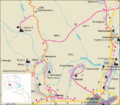
Aragatsotn is a province (marz) of Armenia. It is located in the western part of the country. The capital and largest city of the province is the town of Ashtarak. The Statistical Committee of Armenia reported its population was 128,941 in the 2022 census.

Oshakan is a village in the Ashtarak Municipality of the Aragatsotn Province of Armenia located 3 kilometers southwest from Ashtarak. It is well known to historians and pilgrims of the Armenian Apostolic Church as the site of the grave of Mesrop Mashtots, the inventor of the Armenian alphabet.
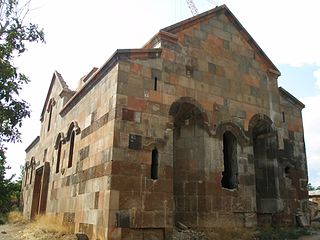
Voskevaz is a village in the Ashtarak Municipality of the Aragatsotn Province of Armenia. Not far from the center of the village is the church of Surp Hovhannes, built between the 7th and 12th centuries. The village is home to the Hayasy brewery.
Agarakavan is a village in the Talin Municipality of the Aragatsotn Province of Armenia. It was populated by Armenian genocide survivors from Van in 1920.

Aragats is a village in the Aparan Municipality of the Aragatsotn Province of Armenia.
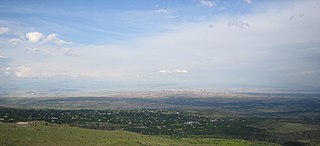
Byurakan (Armenian: Բյուրական) is a village in the Ashtarak Municipality of the Aragatsotn Province of Armenia, located on the slope of Mount Aragats. The village is home to several historical sites including the 7th-century Artavazik Church, the 10th-century basilica of Saint Hovhannes and a huge 13th-century khachkar monument.
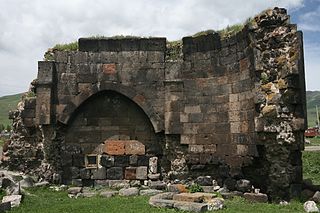
Charchakis is a village in the Alagyaz Municipality of the Aragatsotn Province of Armenia. It was originally known as Charchakes and Jarjaris. Between 1978 and 2006 the village was known as Derek. Derek means spring or source in Kurmanji Kurdish. It is home to a ruined church dating back to the 5th century.
Hnaberd is a village in the Tsaghkahovit Municipality of the Aragatsotn Province of Armenia. The town has a 5th-century church. There is a large Urartian fortress nearby.

Katnaghbyur is a village in the Talin Municipality of the Aragatsotn Province of Armenia. The village has the ruins of a 5th-century church.

Kuchak is a village in the Aparan Municipality of the Aragatsotn Province of Armenia. It was founded in 1829-30 and named after Nahapet Kuchak, a 16th-century Armenian poet.

Lernapar is a village in the Tsaghkahovit Municipality of the Aragatsotn Province of Armenia.
Melikgyugh is a village in the Aparan Municipality of the Aragatsotn Province of Armenia.
Nor Yerznka is a village in the Ashtarak Municipality of the Aragatsotn Province of Armenia.
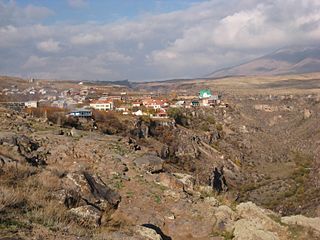
Ohanavan is a village in the Ashtarak Municipality of the Aragatsotn Province of Armenia. Ohanavan was resettled in 1828 by emigrants from Muş. On a nearby escarpment sits the 13th-century Hovhannavank Monastery. Both the town and the monastery are situated atop a steep gorge carved by the Kasagh river.
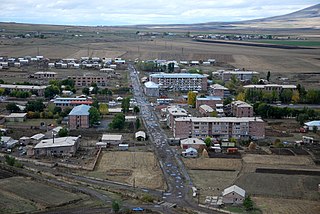
Tsaghkahovit, known as Haji Khalil until 1946, is a village in the Tsaghkahovit Municipality of the Aragatsotn Province of Armenia.
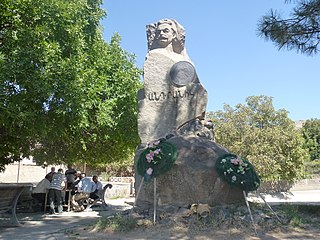
Ujan is a village in the Ashtarak Municipality of the Aragatsotn Province of Armenia.

Yeghipatrush, is a village in the Aparan Municipality of the Aragatsotn Province of Armenia. During the Soviet period, the town was renamed in honor of Askanaz Mravyan, Soviet Armenian Cultural Commissar. The town has a 10th- to 13th-century church of Surb Astvatsatsin. Some 100 meters beyond the church is an early cemetery with one corner of an allegedly 5th-century basilica as well as a khachkar shrine.
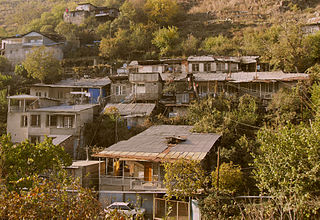
Avan is a village in the Ashtarak Municipality of the Aragatsotn Province of Armenia. The population of the village is mainly Armenian. It is home to the basilica-style church of Surb Astvatsatsin that sits along a street just off the main road beside the main cemetery. The large cemetery contains many khachkars from the 13th to 18th centuries. Adjacent to it across the street is a stepped plinth and broken funerary pillar monument of the 5th to 6th centuries. A worn inscription may be found along the landings of the second and third steps. There is a newly built church also by the name of Surb Astvatsatsin that sits near the main highway closer to the centre of the village, and is said to have been constructed upon old foundations. Some confusion may arise since two churches in the village are referred to as S. Astvatsatsin, but one of them may be the church of S. Hovhannes. They are said to have been first built in the 5th to 6th centuries, were reconstructed in the 13th century, and have sat in ruins until recently since the earthquake of 1679.
Sasunik is a village in the Ashtarak Municipality of the Aragatsotn Province of Armenia. It was founded as a collective farm in 1955, and villagers were resettled from the old village of Sasunik in 1960.

The Arshakid Kings Mausoleum and Basilica is a grave monument complex that sits along a gorge overlooking the Amberd River, and is located in the center of the village of Aghtsk in the Aragatsotn Province of Armenia. It is best known for the mausoleum that once contained the remains of both Christian and pagan kings of the Arshakid dynasty of Armenia. Approximately one hundred meters north of the basilica and tomb complex is a shrine that sits alongside a path leading down to the gorge below, where there are many caves that date from the 16th-18th centuries. Some of the caves have doors and were used during these periods as refuge from invasions.




